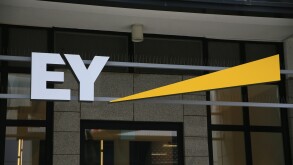Remember the tax profession’s heady days before pillar two? When you could confidently expect to source precedents and guidance on how to approach a scenario, and the global minimum tax was but a twinkle in the OECD’s eye? Rose-tinted spectacles, perhaps, but tax practitioners are certainly facing a new landscape with the complications of pillar two.
However, help is at hand. A webinar held by BDO on March 5 2025 presents examples of several commonly occurring transactions and explains why it is important to keep the pillar two implications in mind at the time transactions are actually being effected.
As Ross Robertson, an international tax partner and the global lead for pillar two at BDO, says: “If an action is taken in a period and an issue connected with that action only materialises when you come to the compliance and reporting cycle, then it’s too late to change that outcome. We’re looking to give you a toolkit to assess pillar two implications of events in real time.”
This article draws out the key points from the webinar.
Pillar two principles and data sourcing
It is important to understand the pillar two framework and how it determines effective tax rates (ETRs) before applying the “toolkit” to events such as transfers of assets, impairments, and write-offs of assets or liabilities. “The structuring for pillar two purposes will generally be very closely aligned to understanding the accounting treatment, both in terms of how gain and loss might be recognised and the extent to which it’s recognised in profit and loss versus recognised in other comprehensive income,” Robertson says.
This underscores the need to structure transactions in a way that aligns with the pillar two principles while considering potential adjustments.
The approach varies depending on whether the transitional country-by-country reporting (CBCR) safe harbour or the full GloBE ETR test is applied, with data sourcing emerging as a fundamental issue. “I still see some confusion on data sourcing,” Robertson says. “If we’re talking about the transitional CBCR safe harbour, what we’re really talking about is the data from your qualified financial statements that are the source that is used in preparation of your CBC report.”
However, for the detailed GloBE ETR test, he adds that “the data source will generally require extraction from the consolidated financial statements of the ultimate parent entity”. While the two may align, the flexibility in how the CBC report is prepared means they may not.
This distinction highlights the need for clarity in data selection to ensure compliance and mitigate risks, particularly in areas such as intragroup transfers, deferred tax recognition, and purchase price accounting. “You need to be clear what lens you’re looking at it through and then consider what are the potential bear traps that might arise,” Robertson says. “There are very different adjusting items for tax and profits, depending on whether we’re looking at it under a CBCR safe harbour lens or a detailed GloBE lens. There may be a situation where an event or a transaction occurs which means that you’re not able to apply the transitional CBCR safe harbour because it kicks you out of the safe harbour, but when you do a full GloBE test, you may still be fine.” Alternatively, a transaction may not impact upon safe harbour calculations but could have significant consequences once the safe harbour can no longer be applied.
ITR's Pillar 2 Forum
Stay up to date with the latest pillar two developments and build your professional network at ITR's Pillar 2 Forum in London on May 22, which has BDO as a sponsor
‘Pillar two is a tameable beast’ – lessons from early implementation
An ITR article summarising insights from the preceding BDO webinar in its pillar two series
BDO's pillar two implementation tracker
A tabulated guide to the pillar two implementation status of countries that are taking steps towards introducing the rules
Adjusting items examples under pillar two
The webinar offers several “cheat sheets” concerning common adjusting items under the transitional CBCR safe harbour and the full GloBE calculations. These can be used to sense check the likely implications of a transaction, and guide on areas for focus.
Hetal Chandaria, a director at BDO UK, and Frederik Boulogne, a partner at BDO Netherlands, walk through three hypothetical situations that illustrate how the pillar two rules interact with various transactions.
The first scenario concerns an intragroup share transfer between subsidiaries in different jurisdictions that results in an accounting gain. The takeaway is that the transaction could mean that the safe harbour criteria are failed in the period; however, there could be no top-up tax exposure under the GloBE rules. So, it is “just” a compliance burden, but one that could potentially be avoided with careful planning. Chandaria stresses the importance of ensuring that ownership interest exceeds 10% in all relevant aspects and tracking asset transfers under transition-year rules to maintain compliance.
The second example involves an intangible property asset transfer from one group entity to another in the same jurisdiction for a cash or debt consideration, where an accounting gain arises but is tax neutral under domestic rules. Again, this could result in the safe harbour criteria being failed. However, Chandaria points out that “if this transaction was structured as a transaction for shares consideration, then we would potentially fall within the GloBE reorganisation principles”, thus leading to a different outcome (with a potentially significantly reduced compliance burden).
The final scenario concerns the waiver of an intercompany receivable between fictional UK and German entities. While the waiver does not create a taxable gain in the UK due to UK domestic corporation tax rules, Boulogne notes that “accounting wise, there would be an expense in the books of the German entity and a gain in the books of the UK entity”, thus reducing the UK entity’s ETR for safe harbour and GloBE purposes and potentially resulting in top-up tax under pillar two principles. There is an overriding message amid the nuances. “The point is, be aware of the consequences of those pillar two arrangements [and] possible solutions,” Boulogne says, “and then you can act accordingly.”
Pillar two-related M&A considerations
M&A transactions potentially create and accelerate pillar two obligations, and therefore require careful structuring and due diligence. The retrospective nature of the revenue test for mergers and demergers adds complexity, potentially bringing a group under pillar two’s purview immediately after completion.
The impact of mergers
A group is subject to pillar two if its consolidated revenues exceed €750 million in at least two of the previous four tax years. However, in the case of a merger, the test does not simply consider the acquiring entity’s historical revenues. Instead, the combined group’s revenue is reconstructed as if it had always existed in its post-merger form. As Robertson explains, “If you are acquiring all, or substantially all, of the members of another consolidated group to form a single consolidated group, you have to treat your group as if it always existed in the post-merger state when testing the €750 million threshold.” Therefore, companies close to the threshold may find themselves in scope immediately after a merger.
Conversely, if a group acquires only a subset of another group, the standard revenue test applies without retrospective adjustments. Robertson notes this has been a stumbling point. “We’ve seen a couple of groups be caught out by this where they cross the threshold as a result of the merger or an acquisition event, assuming they have time before pillar two applies, only to find they are immediately in scope,” he says.
Demerger considerations
The demerger rules also override the ‘standard’ two out of four periods test. If a group subject to pillar two splits into two entities, each new group remains in scope if its first-year revenues after the demerger exceed €750 million, and there are specific rules dealing with the subsequent three periods.
This makes reconstructing pre-merger revenues and forecasting post-demerger revenues crucial to managing compliance. “The rules are relatively logical when you get your head around them,” Robertson says, “but we’ve seen a few groups struggling with how those apply in practice.”
Pre-acquisition structuring and compliance
Pre-acquisition structuring can be effectively employed to mitigate pillar two risks. One common issue is debt waivers, which can create misalignments between accounting and tax treatments, and trigger unexpected liabilities. However, the structuring can also affect the fundamental compliance requirements for a group, potential significantly increasing required work and filings if not carefully planned.
Chandaria illustrates this with an example in which restructuring a target group before acquisition can prevent unnecessary pillar two filings. “This example shows that it’s important to consider pre-acquisition steps, as they can have significant implications from a pillar two perspective,” she says.
Transaction structuring and the GloBE rules
The GloBE rules also affect M&A structuring more broadly. Share transactions typically exclude gains from pillar two income calculations, while asset deals require tax basis reassessment, leading to different ETR calculations, with different deferred tax outcomes. Jeremy Galtieri, the international tax managing director at BDO USA, highlights the issue. “The GloBE rules assume a steady-state basis, which is not always the case in M&A,” he says. “Therefore, Article 6.2 modifies the operation of the GloBE rules to ensure a smooth separation of the target from the seller group and its integration into the acquirer’s group.”
Jurisdictional mismatches, such as US ‘check the box’ elections, complicate matters. “The actual form of the transaction – whether a share deal or an asset deal – makes a big difference,” Galtieri says, “as one jurisdiction may treat the entity as a share sale while another treats it as an asset acquisition.”
Pillar two considerations in standard transactions and events: key takeaways
Whether in M&A or intragroup transactions, pillar two introduces an extra dynamic and added complications. The cited examples underscore the need to carefully structure transactions, consider the tax and accounting implications, and leverage elections.
The following are among the issues to address:
Whether there is a choice between conducting a transaction at book or market value;
How a transaction is effected, in terms of whether it involves a cash, debt, or share consideration;
What impact the nature of the transaction has on the accounting treatment for the transitional CBCR, safe harbour, or consolidated accounts; and
The deferred tax consequences flowing from the transaction approach adopted.
A new tax vista is upon us, with pillar two redefining the role of established factors. “As tax professionals, we’re not used to considering the deferred tax implications of a transaction in the structuring phase,” Robertson says. “But that is changed by pillar two. Even if there’s no current tax impact, what’s the deferred tax impact? And is that going to leave you with a pillar two hangover?
“A pillar two assessment of a transaction or event is very different to a corporate income tax assessment. Tax-neutral [transactions] under corporate income tax principles may result in disqualification from the application of the transitional CBCR safe harbour, or even top-up tax. Pillar two introduces a different set of processes and controls when you’re looking at particular events. I’d really encourage that you consider those live and not leave it to the compliance and reporting cycle, because we have already seen a few nightmare scenarios.”
Staying alert to the pillar two-related consequences of transactions at the time they are conducted, therefore, could just help your tax function to sleep a little more soundly and avoid a “hangover” down the line.
The speakers

Ross Robertson
International tax partner, BDO














